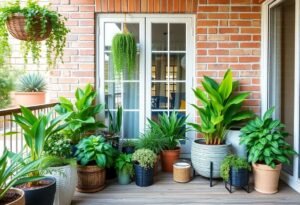Understanding Minimalist Gardens
Minimalist gardens are designed with a focus on simplicity, meaning that every element has its place and purpose. They are characterized by clean lines, uncluttered layouts, and a limited selection of plants, making them easy to maintain. In a minimalist garden, every detail matters, allowing the natural beauty of plants and architecture to shine through.
Key Elements of Minimalist Gardens
When creating minimalist gardens, it’s important to emphasize several key elements. Using natural materials like wood and stone adds elegance and calmness to the space. Limiting the variety of plants to a few species facilitates better highlighting of each plant’s unique features and makes maintenance much simpler—truly the essence of minimalism.
Color and Texture in Minimalist Gardens
Despite their simplicity, minimalist gardens can be quite striking in terms of color and texture. Subdued colors such as grays, beiges, and whites help the space appear larger while promoting harmony. Furthermore, diverse textures, like smooth stones and rough wood, create a compelling composition that draws the eye.
Functionality in Minimalist Gardens
A garden is not just about aesthetics; in minimalist gardens, functionality is paramount. The space should cater to the needs of its users, whether it’s for relaxation, gatherings, or gardening. Incorporating modular outdoor furniture and relaxation zones makes the space more usable and encourages outdoor living.
Plants Suitable for Minimalist Gardens
Choosing plants for minimalist gardens should be a deliberate process. Ideally, opt for plants with simple forms and low maintenance requirements, such as ornamental grasses, succulents, or shrubs with a regular shape. This type of vegetation introduces harmony into the space, and their small sizes ensure they don’t overwhelm the surroundings.
Examples of Minimalist Gardens
While minimalist gardens can take many shapes, they typically feature simple lines and open spaces. Examples can be found in modern house designs, where gardens serve as relaxation zones, providing a buffer from urban noise. Some even incorporate water features, like small ponds or fountains, which add an extra layer of serenity to the environment.
Caring for a Minimalist Garden
Maintaining a minimalist garden is far simpler than managing more elaborate garden spaces. Regular care for the plants, timely pruning, and keeping the area tidy are essential for success. It’s also crucial to ensure proper watering practices, which will enhance the health of the plants and the overall aesthetics of the garden.
Conclusion
Creating a minimalist garden is a wonderful way to revitalize the space surrounding your home. This area promotes relaxation and its aesthetic brings harmony into daily life. Dare to make changes and design your own sanctuary, where you can find your place on this Earth. You’ll surely appreciate the benefits that come from a harmonious environment!
Disclaimer
This article is for informational purposes only. We recommend consulting professionals when planning your garden.

















